Overlooked bioluminescent beetles
“I’ve lived in Florida for decades and have never seen fireflies.”
“I’ve seen them up north, but never here.”
“Fireflies? I don’t think we have fireflies in Florida…”
These are common statements I hear when I bring up the topic of fireflies in the Sunshine state.
In reality, there are over fifty species of fireflies in Florida, more than in any other U.S. state! They live in forests, grasslands, and wetlands, from the mangroves of the Florida Keys and the rivers of grass in the Everglades to the salt marshes of the Panhandle and the dry scrub and pine habitats of central and northern Florida. Fireflies are even found in Florida’s cities, where parks provide enough natural habitat and darkness for them to persist.
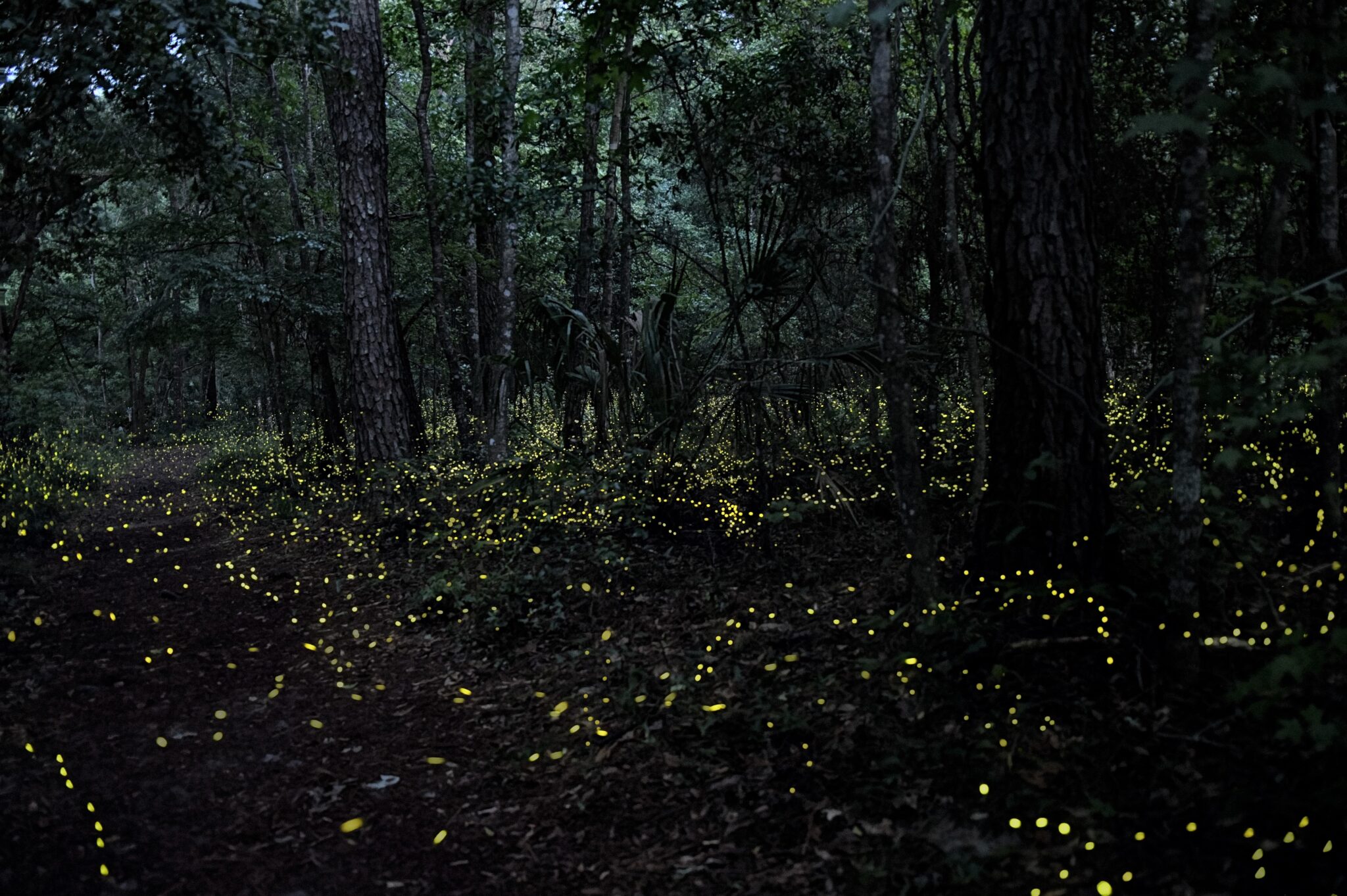

Close relatives of fireflies, the bioluminescent click beetles, are also found in Florida and are encountered more frequently, especially in south Florida. These glowing insects are known by various common names, such as headlight beetle or fire beetle in English and cocuyo, cucubano, and carbunco in Spanish. Glowing click beetles emit light from two round lanterns on their thorax (toward the front of their body) rather than on their abdomen (toward their rear) in the case of fireflies.
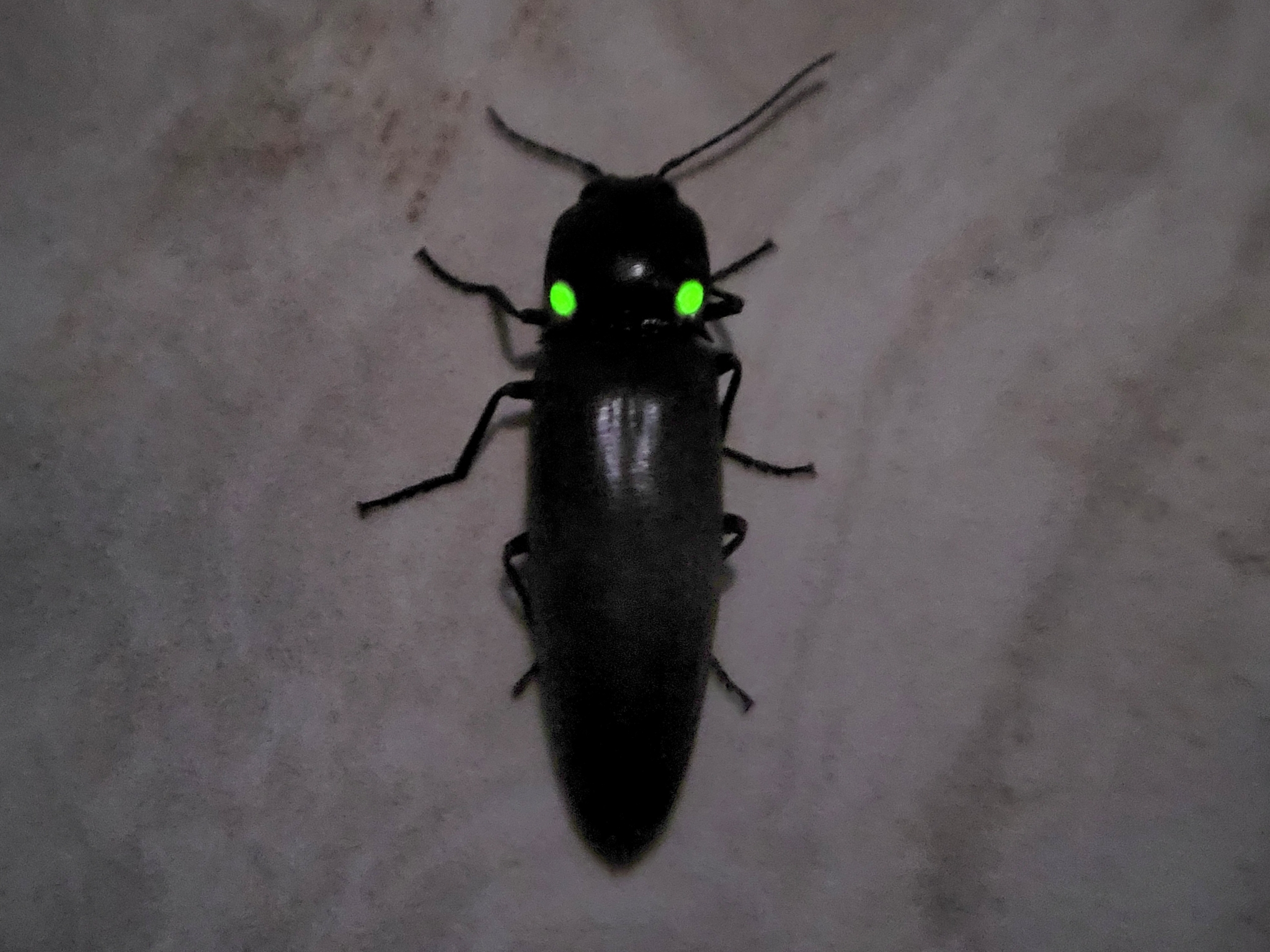

LINK: A Rector /iNaturalist
LINK: CC BY-NC
A hotspot for unique and threatened species
Some species in Florida defy the typical image that is conjured when you hear the word firefly or lightning bug. For example, the Florida scrub dark firefly, also known by its scientific name Lucidota luteicollis, has tiny light organs that it rarely uses. Instead, the black and orange males of this species find females (which are flightless and tucked into the sand) using their large, flattened antennae. The ant-loving scrub firefly, Pleotomodes needhami, which is endemic to central Florida, spends most of its life inside ant nests in sandy habitats. At night, adult females that resemble larvae glow from the ground while winged males search for them with large eyes.
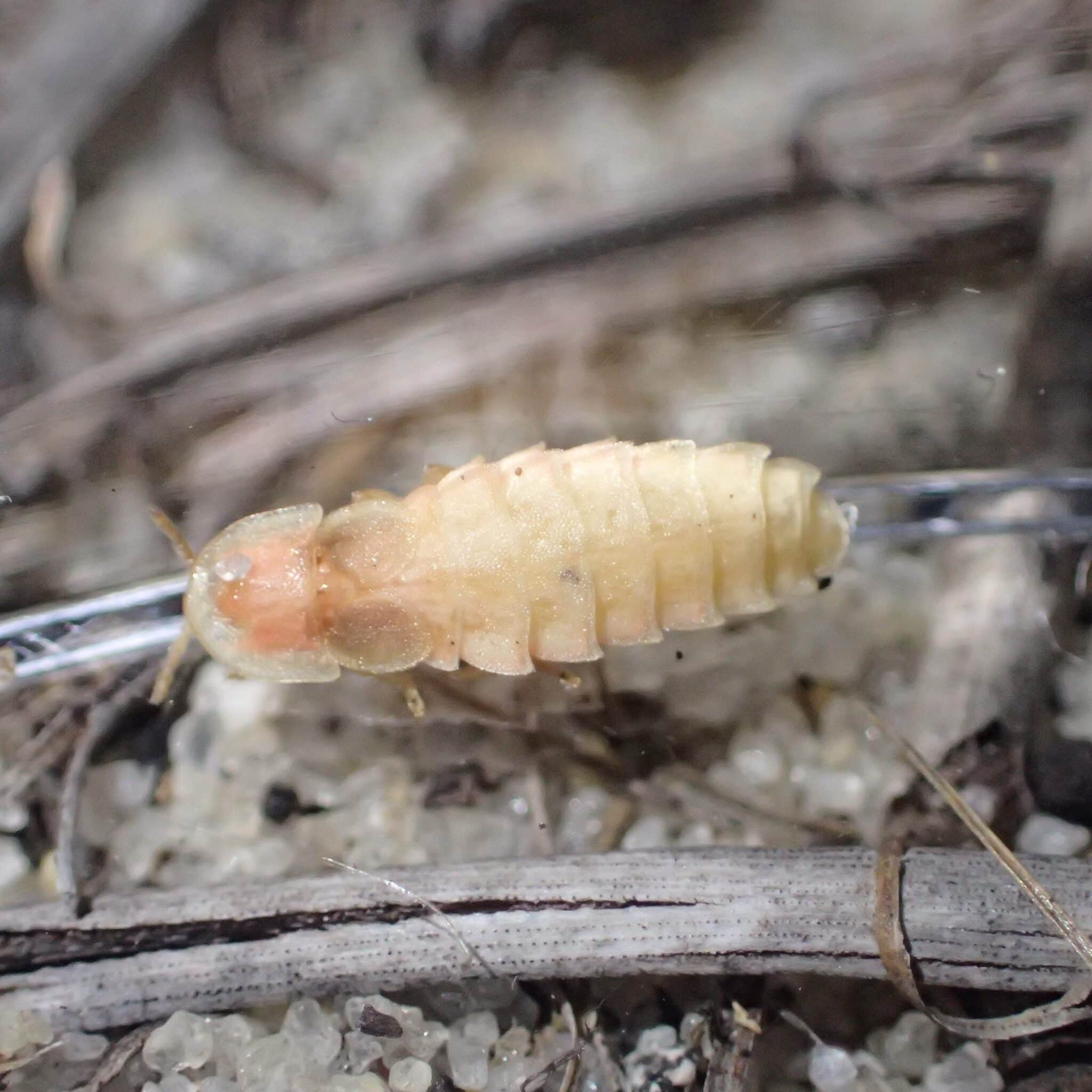

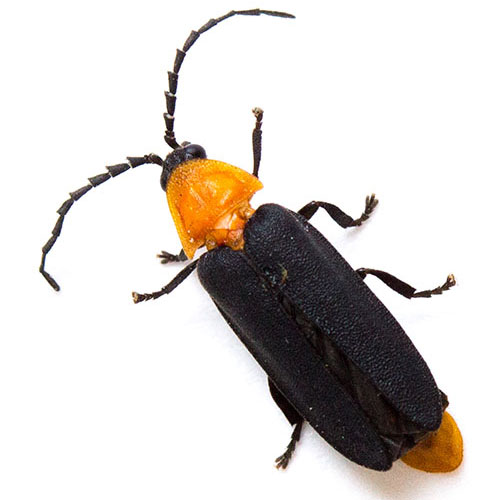

In coastal mangroves and salt marshes, the Florida intertidal firefly, Micronaspis floridana, lives a life at the edge of the sea. The glowing larvae hunt for snails in the damp mud, sand, and leaf litter near the high-tide line, and adults begin flying as darkness falls, blinking over marshes and among mangroves roots.
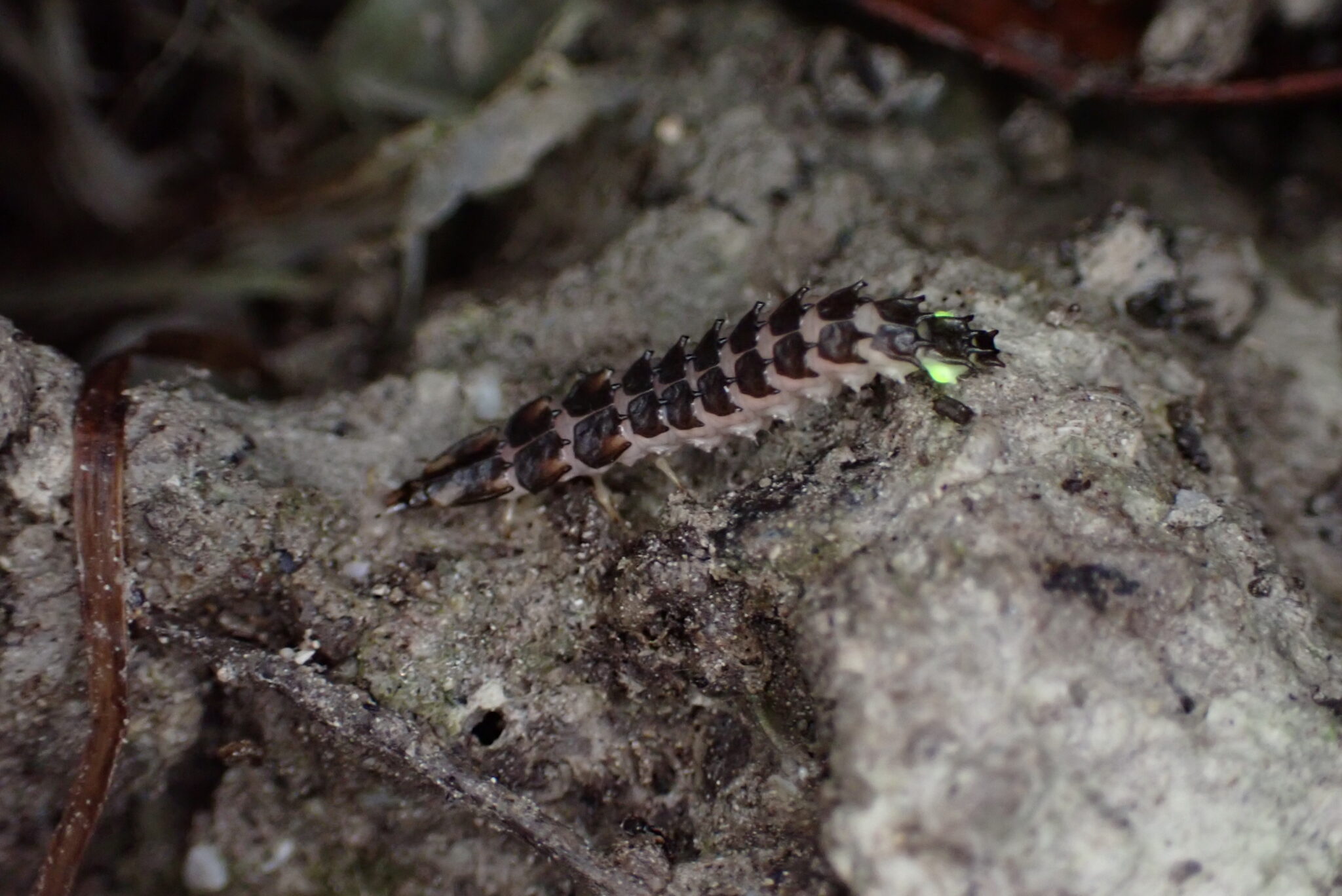

Are there fireflies in your backyard? In your local park?
Protecting fireflies begins with knowing that they are there to protect. Because of their small size, nocturnal behavior, and often brief adult life-stages, fireflies can remain undetected by land managers and community members. The Firefly Atlas invites you to explore your yard, property, or park with fresh eyes to help improve our collective knowledge of Florida’s lightning bugs and to strengthen our stewardship of these amazing insects.
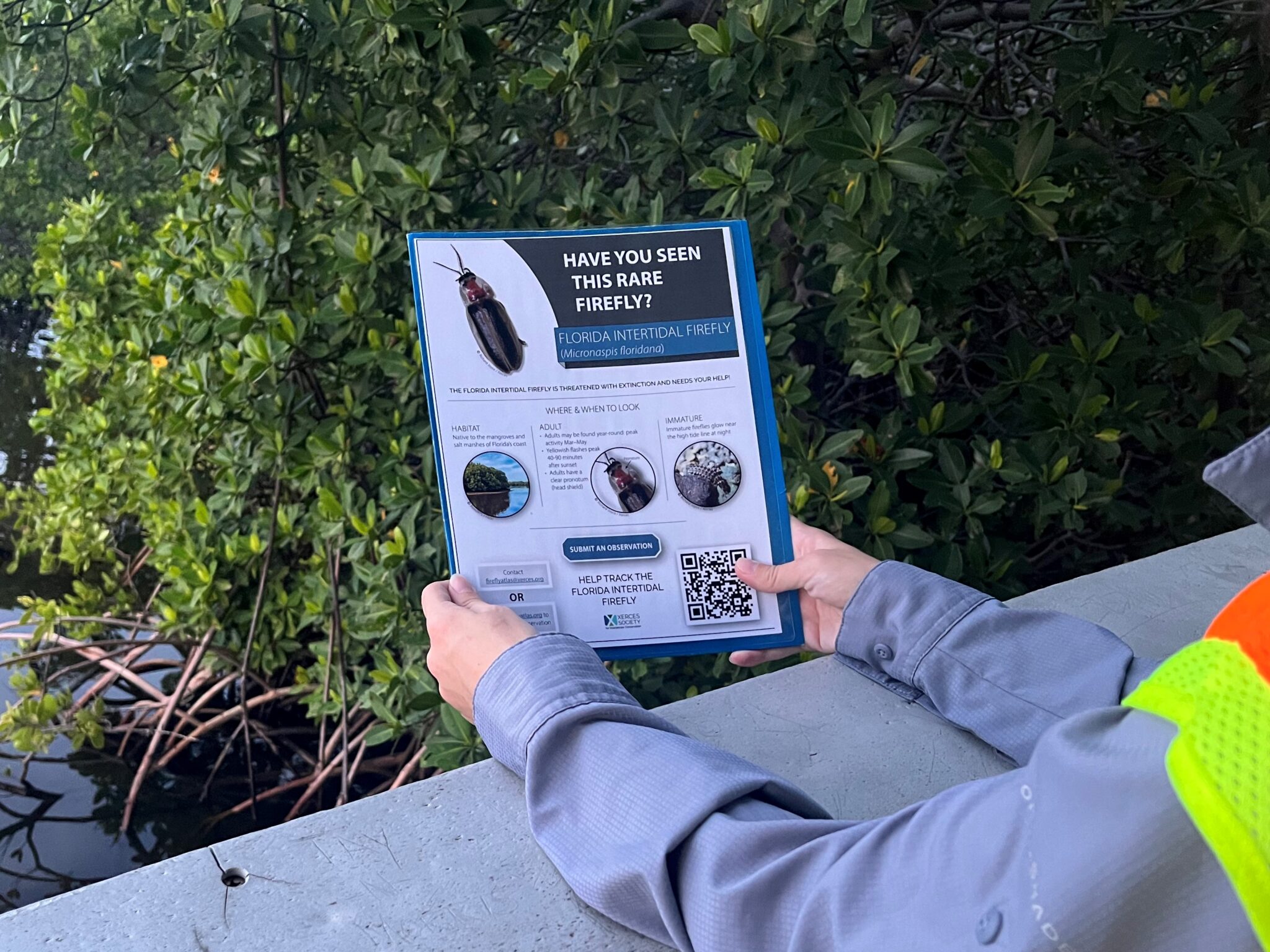

From anonymity to appreciation and advocacy
Whether you grew up calling them fireflies, lightning bugs, luciérnagas, blinkies, or peeny-wallies, watching them in awe is a cherished and magical experience, one that many parents and grandparents hope to share with their children and grandchildren. To enjoy fireflies into the future, we will need to address the threats that they face — habitat loss, light pollution, pesticides, and climate change. These are daunting challenges, but the magic of fireflies is a powerful motivator.
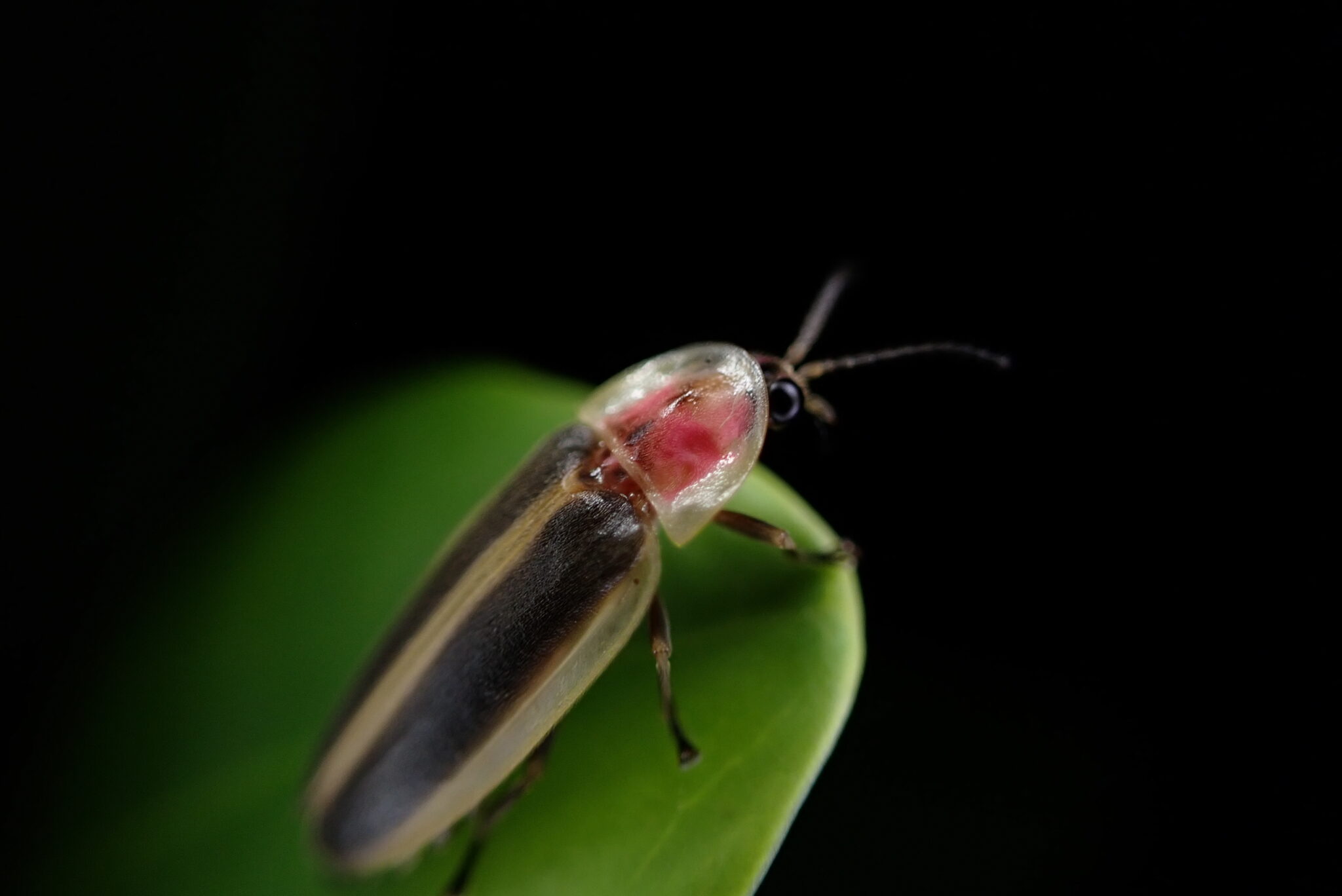

Notice: Below is a list of 2 important links included on this page.
2. CC BY-NC
Please note that while screen readers have made significant strides, they may still lack full support for optimal web accessibility.
Overlooked bioluminescent beetles
“I’ve lived in Florida for decades and have never seen fireflies.”
“I’ve seen them up north, but never here.”
“Fireflies? I don’t think we have fireflies in Florida…”
These are common statements I hear when I bring up the topic of fireflies in the Sunshine state.
In reality, there are over fifty species of fireflies in Florida, more than in any other U.S. state! They live in forests, grasslands, and wetlands, from the mangroves of the Florida Keys and the rivers of grass in the Everglades to the salt marshes of the Panhandle and the dry scrub and pine habitats of central and northern Florida. Fireflies are even found in Florida’s cities, where parks provide enough natural habitat and darkness for them to persist.

Close relatives of fireflies, the bioluminescent click beetles, are also found in Florida and are encountered more frequently, especially in south Florida. These glowing insects are known by various common names, such as headlight beetle or fire beetle in English and cocuyo, cucubano, and carbunco in Spanish. Glowing click beetles emit light from two round lanterns on their thorax (toward the front of their body) rather than on their abdomen (toward their rear) in the case of fireflies.

A hotspot for unique and threatened species
Some species in Florida defy the typical image that is conjured when you hear the word firefly or lightning bug. For example, the Florida scrub dark firefly, also known by its scientific name Lucidota luteicollis, has tiny light organs that it rarely uses. Instead, the black and orange males of this species find females (which are flightless and tucked into the sand) using their large, flattened antennae. The ant-loving scrub firefly, Pleotomodes needhami, which is endemic to central Florida, spends most of its life inside ant nests in sandy habitats. At night, adult females that resemble larvae glow from the ground while winged males search for them with large eyes.


In coastal mangroves and salt marshes, the Florida intertidal firefly, Micronaspis floridana, lives a life at the edge of the sea. The glowing larvae hunt for snails in the damp mud, sand, and leaf litter near the high-tide line, and adults begin flying as darkness falls, blinking over marshes and among mangroves roots.

Are there fireflies in your backyard? In your local park?
Protecting fireflies begins with knowing that they are there to protect. Because of their small size, nocturnal behavior, and often brief adult life-stages, fireflies can remain undetected by land managers and community members. The Firefly Atlas invites you to explore your yard, property, or park with fresh eyes to help improve our collective knowledge of Florida’s lightning bugs and to strengthen our stewardship of these amazing insects.

From anonymity to appreciation and advocacy
Whether you grew up calling them fireflies, lightning bugs, luciérnagas, blinkies, or peeny-wallies, watching them in awe is a cherished and magical experience, one that many parents and grandparents hope to share with their children and grandchildren. To enjoy fireflies into the future, we will need to address the threats that they face — habitat loss, light pollution, pesticides, and climate change. These are daunting challenges, but the magic of fireflies is a powerful motivator.




